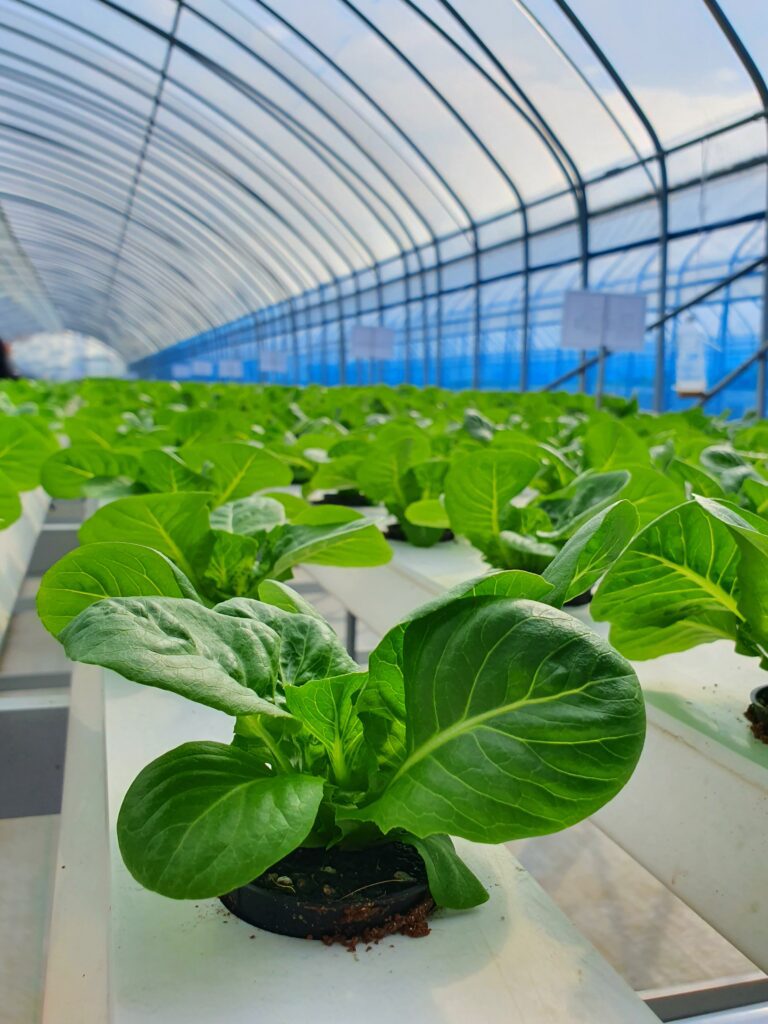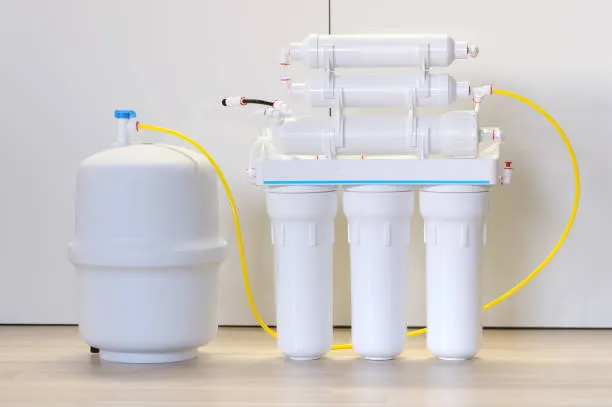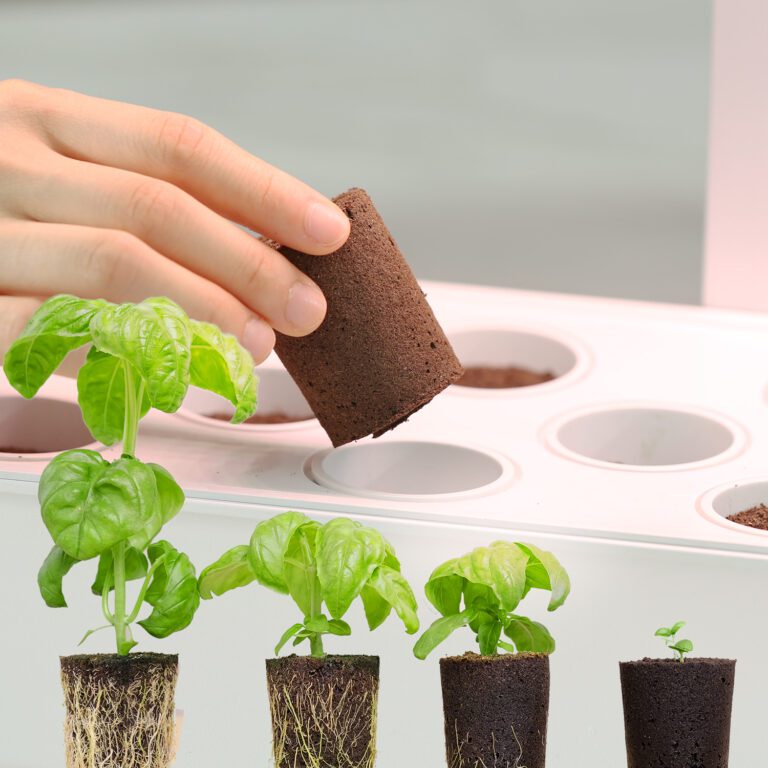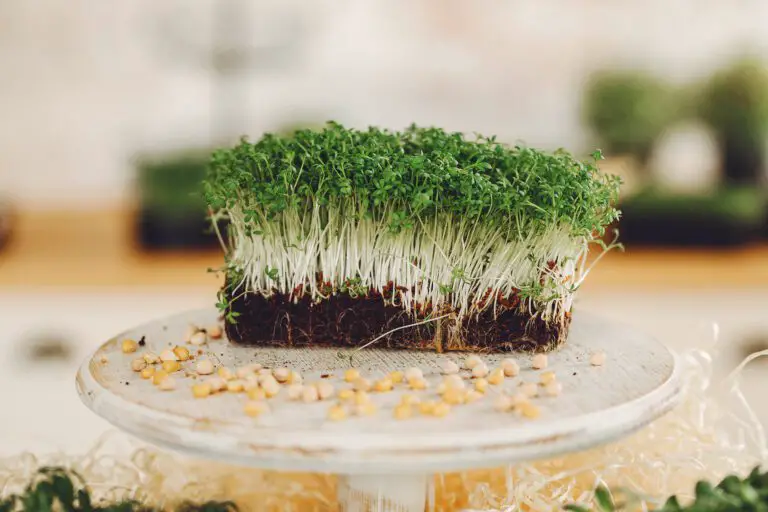Why Coco Peat is a Fantastic Hydroponic Growing Medium: 10 Amazing Facts
Table of Contents
The Benefits of Using Coco Peat in Hydroponic Systems
Coco peat, also known as coir pith, has gained popularity as a growing medium in hydroponic systems due to its numerous benefits. One major advantage is its ability to enhance nutrient absorption in plants. Coco peat has a high cation exchange capacity, meaning it can hold and release essential nutrients as needed by the plants. This ensures that the plants receive a steady supply of nutrients, promoting healthy growth and higher yields.
In addition to improving nutrient uptake, coco peat also plays a crucial role in improving water retention in hydroponic systems. Its fibrous structure allows it to retain moisture while still providing adequate aeration to the plant roots. This helps to prevent waterlogging and root rot, two common issues in hydroponics. Furthermore, this excellent water retention property allows for less frequent watering, reducing water usage and promoting resource efficiency.
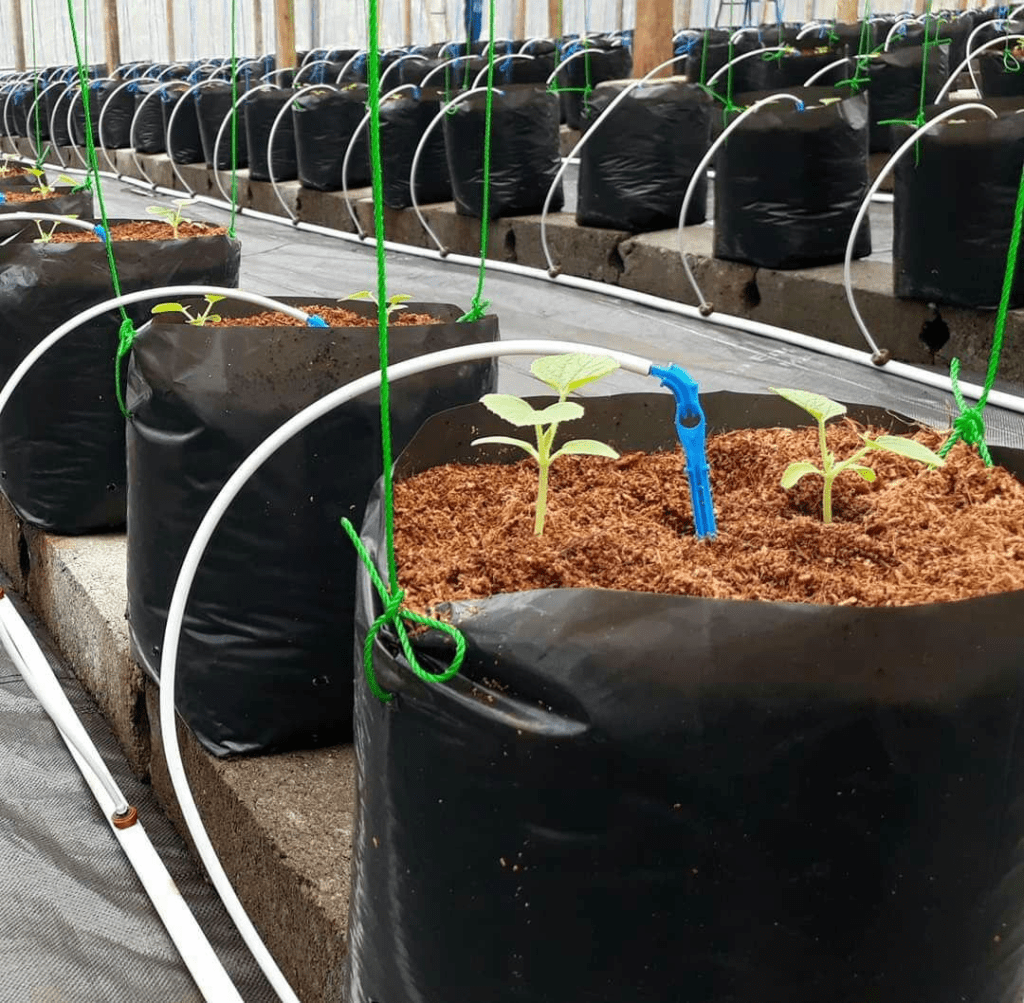
The benefits of using coco peat in hydroponic systems go beyond just plant health. It is also a sustainable alternative to traditional growing mediums. Coco peat is made from the husks of coconuts, a renewable resource that would otherwise go to waste. By utilizing coco peat, gardeners can reduce their environmental impact and contribute to a more sustainable future. So not only are you improving your gardening practice, but you are also helping the planet in the process.
An Overview of Coco Peat and its Composition
Coco peat, also known as coir pith, is a widely used growing medium in hydroponic systems due to its numerous benefits. It is a byproduct of coconut husks, which are processed to extract fibers for various applications. Coco peat consists predominantly of cellulose, lignin, and hemicellulose, and it has a high water-holding capacity.
One of the key advantages of coco peat is its ability to retain water while providing excellent drainage. This is due to its fibrous structure, which creates small air pockets that promote optimal root oxygenation. Additionally, coco peat has a neutral pH, which means it does not impact the acidity or alkalinity of the nutrient solution used in hydroponics. This makes it a versatile option for a wide range of plant species that require specific pH levels for optimal growth.
Overall, the composition of coco peat makes it an attractive choice for hydroponic growers. Its high water retention, along with its pH-neutral properties and fibrous structure, create an ideal environment for plants to thrive. In the following sections, we will delve deeper into how coco peat enhances nutrient absorption, improves water retention, promotes strong root development, and provides resistance against disease and pest infestations. Stay tuned for a comprehensive understanding of the benefits of using coco peat in hydroponic systems.
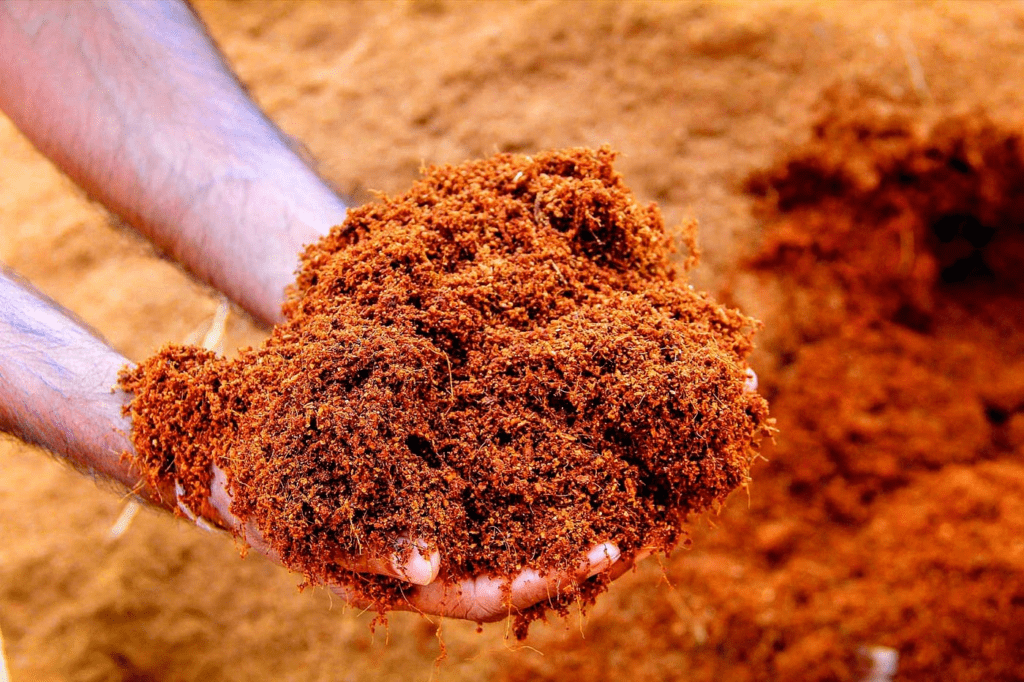
How Coco Peat Enhances Nutrient Absorption in Plants
Coco peat, also known as coir or coconut fiber, is a versatile growing medium that offers numerous benefits for nutrient absorption in plants. One of the key advantages of using coco peat in hydroponic systems is its ability to enhance nutrient uptake and utilization by plants.
The structure of coco peat promotes better contact between the nutrient solution and plant roots, allowing for efficient absorption of essential elements. As a result, plants grown in coco peat have been shown to exhibit improved nutrient absorption rates compared to those grown in traditional soil-based mediums. This increased nutrient availability translates into healthier and more robust plants, with enhanced growth and development.
Furthermore, the high cation exchange capacity (CEC) of coco peat plays a vital role in nutrient retention and release. Cation exchange refers to the ability of a medium to attract and exchange positively charged ions, such as vital nutrients like calcium, magnesium, and potassium. Coco peat has a naturally high CEC, allowing it to hold onto nutrients and gradually release them to the plants over time. This ensures a steady supply of essential elements, reducing the risk of nutrient deficiencies and optimizing plant growth.
Incorporating coco peat into hydroponic systems not only enhances nutrient absorption but also promotes overall plant health and vigor. Its unique properties make it an ideal choice for gardening enthusiasts looking to maximize the growth and productivity of their plants. By harnessing the power of coco peat’s nutrient-enhancing abilities, gardeners can unlock the full potential of their hydroponic setups and enjoy thriving plant growth.
The Role of Coco Peat in Improving Water Retention
Coco peat, also known as coir or coconut coir, is a highly effective medium for improving water retention in hydroponic systems. This natural, organic material has the ability to retain water while still allowing for proper drainage, making it an ideal choice for gardening enthusiasts.
One of the main reasons coco peat is so effective at improving water retention is its high lignin content. Lignin is a complex organic polymer that gives plants rigidity and structure, but it also has the ability to absorb and retain water. When coco peat is added to a hydroponic system, it absorbs water easily and holds onto it for longer periods of time, providing a consistent moisture level for plants to thrive. This is especially beneficial in arid climates or when water availability is limited.

In addition to its water retention properties, coco peat also helps to prevent waterlogging. Its granular structure allows for excess water to drain away, preventing the roots of plants from becoming waterlogged and potentially drowning. This is crucial for the overall health and vitality of plants, as waterlogged roots can lead to rot and disease. By incorporating coco peat into a hydroponic system, gardeners can ensure that their plants receive the perfect balance of moisture and oxygen for optimal growth.
Coco Peat as a Sustainable Alternative to Traditional Growing Mediums
Coco peat is gaining popularity as a sustainable alternative to traditional growing mediums in hydroponic systems. Made from the husk of coconuts, this organic material offers numerous benefits for both plants and the environment.
Firstly, coco peat is a renewable resource. Coconuts are readily available in many parts of the world, making it an abundant and sustainable choice for hydroponic gardening. Unlike other growing mediums that require mining or harvesting of natural resources, coco peat production utilizes a waste product from the coconut industry, reducing the environmental impact. Furthermore, its biodegradable nature means that it can be easily decomposed and recycled, making it an environmentally friendly option.
| Aspect | Coco Peat as a Sustainable Alternative | Traditional Growing Mediums |
|---|---|---|
| Origin | Derived from coconut husks, a byproduct of the coconut industry, making it a renewable resource | Often sourced from peat bogs, leading to ecological concerns and depletion |
| Renewability | Renewable, as coconut trees can produce husks continuously | Non-renewable in the short term; peat bogs require thousands of years to form |
| Environmental Impact | Low environmental impact; utilizes waste material that might otherwise be discarded | High environmental impact; peat extraction contributes to habitat destruction and carbon release |
| Water Retention | Excellent water retention capacity, reducing the need for frequent irrigation | Variable water retention; may require more frequent watering |
| Aeration | Provides good aeration to plant roots, promoting healthy root development | May compact over time, reducing aeration and root health |
| pH Neutral | Naturally pH neutral, providing a stable environment for plant growth | Peat can be acidic, requiring additional amendments to achieve an optimal pH |
| Biodegradability | Biodegradable, decomposes slowly, enriching the soil over time | Non-biodegradable; may contribute to waste issues |
| Usage in Hydroponics | Suitable for hydroponic systems, offering an inert and sterile substrate | Not always ideal for hydroponics; may introduce contaminants |
| Transportation Impact | Lightweight, reducing transportation-related carbon emissions | Can be heavy, leading to higher transportation-related emissions |
| Availability | Widely available in regions with coconut production | Dependent on peat bog locations, limiting availability in certain regions |
| Cost | Cost-effective due to widespread availability | Prices can vary; may be higher due to limited availability in some areas |
In addition to its sustainability, coco peat also provides excellent water and nutrient retention capabilities. Its fibrous structure allows for optimal air circulation, preventing waterlogging and promoting healthier root development. The high water holding capacity of coco peat ensures that plants have access to moisture even during dry periods, reducing the need for frequent watering. Moreover, this growing medium has a neutral pH, which helps to maintain the proper nutrient balance in hydroponic systems and enhance plant growth.
The pH-Neutral Properties of Coco Peat and its Impact on Plant Health
Coco peat is well-known for its pH-neutral properties, making it an excellent choice for hydroponic systems. The pH level of coco peat typically ranges from 5.5 to 6.5, which is close to the optimal range for most plants. This neutral pH ensures that the growing medium does not hinder nutrient uptake, allowing plants to thrive and maintain optimal health.
When the pH level of the growing medium is too high or too low, it can lead to nutrient deficiencies or toxicities in plants. However, with coco peat’s pH-neutral properties, it provides a stable environment for plant roots, allowing for efficient absorption of essential nutrients. This, in turn, promotes healthy growth and development, leading to stronger and more vibrant plants.
Another advantage of coco peat’s pH-neutral properties is that it helps to maintain a balanced microbial activity in the root zone. The beneficial microorganisms, such as bacteria and fungi, play a crucial role in nutrient availability and disease resistance. By providing an optimal pH range for these microorganisms, coco peat supports a healthy soil ecosystem, ensuring that plants have access to the nutrients they need and are better equipped to combat diseases.
Coco Peat’s Ability to Suppress Weed Growth in Hydroponic Systems
Weed growth can be a major nuisance in hydroponic systems, but the use of coco peat as a growing medium can help suppress the growth of these unwanted plants. Coco peat, derived from the fibrous husk of coconuts, has natural properties that make it an effective weed deterrent. By incorporating coco peat into your hydroponic system, you can create an environment that is less favorable for weed germination and growth.
One of the key factors that contribute to coco peat’s ability to suppress weed growth is its high water retention capacity. Coco peat has excellent moisture-holding capabilities, which can help maintain optimal levels of moisture in the root zone of plants. This creates conditions that are less favorable for weed seeds to sprout and establish themselves. Additionally, coco peat’s ability to retain water can help reduce competition for moisture between the desired plants and any potential weeds. By keeping the root zone consistently moist, coco peat helps to ensure that the desired plants have a competitive advantage over weeds.
Furthermore, coco peat’s texture can play a role in suppressing weed growth. The fibrous nature of coco peat creates a loose and airy growing medium, which not only promotes good root development but also makes it difficult for weed seeds to penetrate and establish themselves. This physical barrier can prevent weed seeds from making contact with the nutrient solution and accessing the necessary resources for growth. As a result, the presence of coco peat in hydroponic systems can significantly reduce the occurrence and spread of weeds.
In summary, the use of coco peat as a growing medium in hydroponic systems can effectively suppress weed growth. Its high water retention capacity, along with its fibrous texture, creates an environment that is less favorable for weed germination and establishment. Incorporating coco peat into your hydroponic setup can help ensure that your desired plants thrive while minimizing the presence of unwanted weeds.
The Role of Coco Peat in Promoting Strong Root Development
Coco peat, also known as coir or coconut fiber, plays a crucial role in promoting strong root development in plants within hydroponic systems. This natural and sustainable growing medium has unique characteristics that create an ideal environment for roots to thrive.
One of the key reasons why coco peat is beneficial for root development is its excellent water-holding capacity. As a highly porous material, coco peat can retain moisture while still allowing excess water to drain away. This balanced moisture level ensures that plant roots have constant access to water without the risk of waterlogging, which can lead to root rot. By maintaining an optimal moisture balance, coco peat provides roots with the necessary hydration to absorb essential nutrients effectively.
Furthermore, coco peat’s loose and fibrous structure promotes the growth of a healthy root system. The airy texture of coco peat allows roots to penetrate and spread easily, encouraging the development of a robust root network. This, in turn, enhances nutrient uptake, as more root surface area is available for absorption. A well-developed root system supported by coco peat can absorb nutrients more efficiently, leading to better overall plant growth and productivity.
Coco Peat’s Resistance to Disease and Pest Infestations
Coco peat has been gaining popularity among hydroponic gardeners due to its natural resistance to diseases and pest infestations. This makes it highly advantageous for maintaining a healthy and thriving garden. One of the contributing factors to coco peat’s resistance lies in its ability to retain moisture while still promoting good drainage.
This feature prevents water from lingering on the surface of the growing medium, which creates an unfavorable environment for the development of harmful pathogens and pests. Additionally, coco peat has a neutral pH level, making it less susceptible to certain diseases that thrive in acidic or alkaline conditions. By creating a balanced and optimal growing environment, coco peat helps plants maintain their natural defenses against diseases and pests, resulting in healthier and more resilient crops.
The Environmental Benefits of Using Coco Peat in Hydroponics
Coco peat, also known as coir pith, is gaining popularity as a sustainable alternative to traditional growing mediums in hydroponic systems. Beyond its ability to provide an optimal environment for plant growth, coco peat also brings several notable environmental benefits to the table.
First and foremost, coco peat is derived from the husk of coconuts, which would otherwise be discarded as waste. By utilizing this byproduct, we reduce the need for additional extraction of resources, thus minimizing environmental impact. Furthermore, coco peat is naturally renewable and abundant, ensuring a consistent supply without depleting our natural resources.
Another significant environmental benefit of using coco peat is its ability to conserve water. Coco peat has high water retention properties, allowing it to hold moisture for extended periods without becoming waterlogged. This means that hydroponic systems utilizing coco peat require less frequent watering, reducing overall water consumption. In a world where water scarcity is a growing concern, this is a particularly valuable trait.
Moreover, coco peat not only conserves water but also helps to prevent nutrient runoff. Unlike traditional soil-based growth mediums, coco peat retains nutrients from the fertilizers used in hydroponic systems, preventing them from leaching into the environment. This reduces the risk of water pollution and ensures that plants receive a constant supply of nutrients, promoting healthier growth.
In conclusion, the use of coco peat in hydroponic systems brings significant environmental benefits. From reducing waste and resource extraction to conserving water and preventing nutrient runoff, coco peat proves to be a sustainable and eco-friendly choice for gardening enthusiasts.
How Coco Peat Can Improve Crop Yield and Quality
Coco peat, also known as coir peat or coir dust, has gained popularity as a growing medium in hydroponic systems due to its ability to improve crop yield and quality. One of the key ways in which coco peat enhances crop productivity is through its excellent water holding capacity. This natural fiber material can hold up to 10 times its weight in water, ensuring that plants have a constant supply of moisture even in dry conditions.
Additionally, coco peat promotes strong root development, which is vital for the overall health and productivity of plants. Its fibrous structure not only provides support to the roots but also allows for proper aeration and drainage, preventing the root rot commonly observed in other growing mediums. As a result, plants grown in coco peat experience improved nutrient uptake, leading to healthier and more productive crops.
The benefits of coco peat in hydroponics extend beyond water retention and root development. Coco peat is naturally pH-neutral, providing an optimal growing environment for plants. This ensures that essential nutrients are readily available for uptake, eliminating the need for frequent adjustments to the pH levels of the hydroponic solution. Moreover, coco peat possesses weed-suppressing properties, reducing the competition for nutrients and resources and allowing the cultivated plants to thrive.
In conclusion, the use of coco peat in hydroponic systems offers significant advantages in terms of crop yield and quality. Its water holding capacity, ability to promote root development, pH-neutral properties, and weed-suppressing abilities contribute to improved plant health and productivity. Incorporating coco peat into hydroponic gardening practices can empower enthusiasts with a reliable and sustainable growing medium that supports the growth of healthy and bountiful crops.
The Versatility of Coco Peat in Different Hydroponic Systems
Coco peat, also known as coir pith, is a highly versatile growing medium that can be used in a wide range of hydroponic systems. Its adaptability and flexibility make it a favorite choice among hydroponic gardeners and commercial growers alike. Whether you are using a nutrient film technique (NFT) system, a deep water culture (DWC) system, or an ebb and flow system, coco peat can be easily integrated.
One reason why coco peat is so versatile is its excellent water holding capacity. It has the ability to retain large amounts of water while also allowing for optimal drainage. This makes it suitable for both water-based and media-based hydroponic systems. In addition, coco peat has a neutral pH level, which means that it can be easily adjusted to meet the specific requirements of different plants. This versatility in maintaining proper moisture levels and pH balance makes coco peat an ideal growing medium for a variety of hydroponic setups.
Coco Peat’s Ability to Improve Soil Structure and Aeration
Coco peat, also known as coir pith, is a remarkable growing medium that offers numerous benefits when used in hydroponic systems. One of its key advantages is its ability to improve soil structure and aeration.
When coco peat is added to the growing medium, it helps create a well-structured soil that allows for better root growth and development. The fibrous nature of coco peat helps create air pockets in the soil, promoting healthy soil structure and preventing compaction. This allows plant roots to penetrate the soil easily, access nutrients, and absorb water efficiently. Improved soil structure also enhances the overall stability and drainage of the growing medium, reducing the risk of waterlogging and root rot.
In addition to improving soil structure, coco peat also significantly enhances aeration. The fibrous composition of coco peat allows for optimal air circulation within the growing medium, providing plant roots with the necessary oxygen they need for respiration. This increased oxygen availability stimulates root growth and nutrient uptake, leading to healthier and more vigorous plants. Moreover, the improved aeration provided by coco peat prevents the growth of anaerobic bacteria, fungi, and other harmful organisms that thrive in oxygen-deprived environments.
The Longevity of Coco Peat as a Growing Medium
Coco peat, also known as coir pith, is a highly durable and long-lasting growing medium for hydroponic systems. One of the key benefits of using coco peat is its remarkable longevity, making it cost-effective and sustainable for gardeners and growers.
Unlike traditional growing mediums that break down over time and need frequent replacement, coco peat retains its structure and quality for extended periods. This is attributed to its composition, which consists of lignin, cellulose, and hemicellulose, all of which contribute to its durability. As a result, coco peat can last up to three years, providing consistent and reliable support for plant growth.
The longevity of coco peat offers significant advantages to hydroponic gardeners. It reduces the frequency of media changes, saving both time and money. Additionally, the consistent quality of coco peat ensures stable conditions for plant roots, promoting healthy growth and optimal nutrient absorption. With its ability to withstand the rigors of hydroponic systems, coco peat proves to be an excellent long-term investment for gardening enthusiasts.
Tips for Using Coco Peat Effectively in Hydroponic Gardening
Coco peat is an excellent growing medium for hydroponic gardening due to its numerous benefits. However, to ensure optimal results, it is important to use coco peat effectively. Here are some tips to help you get the most out of this sustainable alternative:
1. Preparing the coco peat: Before using coco peat, it is essential to rehydrate it properly. Soak the dried coco peat in water to allow it to expand and rehydrate fully. This process will ensure that the coco peat is ready to retain moisture and provide the necessary support for plant growth.
2. Balancing the pH: Coco peat has a slightly acidic pH, which may not be suitable for all plants. It is crucial to monitor and adjust the pH levels to match the specific requirements of your plants. Use a pH testing kit to regularly check the pH of the nutrient solution and make necessary adjustments using pH buffering solutions.
3. Correct watering practices: Overwatering or under watering can adversely affect plant growth in hydroponic systems. Coco peat has excellent water retention capabilities, so waterlogged roots can be a common issue. Monitor moisture levels closely and water your plants accordingly to ensure a balance between hydration and proper drainage.
4. Nutrient supplementation: Although coco peat provides essential nutrients, it is important to supplement it with a proper nutrient solution. Hydroponic systems rely on nutrient-rich solutions to provide plants with the necessary elements for growth. Develop a nutrient schedule based on the specific needs of your plants and regularly test the nutrient solution to maintain optimal nutrient levels.
5. Maintenance and hygiene: Regular maintenance of your hydroponic system is key to its success. Check the coco peat regularly for any signs of algae, fungus, or pests and take immediate action to eliminate them. It is also important to clean and sanitize your hydroponic system regularly to prevent the buildup of pathogens or contaminants.
By following these tips, you can maximize the benefits of using coco peat in hydroponic gardening. With proper care and attention, coco peat can help you create a thriving and sustainable growing environment for your plants.
• Preparing the coco peat: Soak the dried coco peat in water to allow it to expand and rehydrate fully.
• Balancing the pH: Monitor and adjust the pH levels of the nutrient solution to match your plants’ requirements.
• Correct watering practices: Monitor moisture levels closely and water your plants accordingly to ensure a balance between hydration and proper drainage.
• Nutrient supplementation: Develop a nutrient schedule based on your plants’ needs and regularly test the nutrient solution for optimal levels.
• Maintenance and hygiene: Regularly check for signs of algae, fungus, or pests in the coco peat. Clean and sanitize your hydroponic system regularly.
What is coco peat made from?
Coco peat, also known as coir peat, is made from the fibrous husk of coconuts.
How does coco peat enhance nutrient absorption in plants?
Coco peat has a high cation exchange capacity (CEC), allowing it to hold and release nutrients to plants more effectively.
Can coco peat be used as a sustainable alternative to traditional growing mediums?
Yes, coco peat is considered a sustainable option as it is a byproduct of coconut production and can be easily replenished.
Does coco peat promote strong root development in plants?
Yes, coco peat’s ability to retain moisture and provide good aeration promotes healthy root growth in plants.
Is coco peat resistant to diseases and pest infestations?
Yes, coco peat has natural antifungal and antimicrobial properties, making it resistant to diseases and pests that can harm plants.
How does coco peat improve water retention in hydroponic systems?
Coco peat has excellent water retention capabilities, ensuring that plants have access to moisture even in hydroponic systems.
Can coco peat suppress weed growth in hydroponic systems?
Yes, coco peat forms a physical barrier that inhibits weed growth, reducing the need for additional weed control measures.
Does coco peat have any environmental benefits in hydroponics?
Yes, coco peat is a renewable resource, reduces the use of traditional soil, and can be recycled or composted after use.
How can coco peat improve crop yield and quality?
Coco peat provides optimal growing conditions for plants, resulting in increased yield and improved quality of crops.
Can coco peat be used in different types of hydroponic systems?
Yes, coco peat is versatile and can be used in various hydroponic systems such as drip irrigation, NFT (Nutrient Film Technique), and ebb and flow systems.
Does coco peat improve soil structure and aeration?
Yes, coco peat helps improve the structure of soil by increasing its porosity and enhancing its ability to hold moisture.
How long does coco peat last as a growing medium?
Coco peat has a long lifespan and can be used for multiple growing cycles, typically lasting up to 3-4 years.

Pallavi Gupta is a burgeoning writer at SouthElMonteHydroponics, blending her passion for data analysis with a keen interest in biotechnology. Currently pursuing a Bachelor’s in Biotechnology at Amity University, Pallavi delves into the intricacies of life sciences while gaining hands-on experience in the exciting world of data analysis. Her unique background provides a fresh perspective on hydroponic farming, as she explores the intersection of biotechnology and sustainable agriculture. Through her writing, Pallavi aims to bridge the gap between data-driven insights and innovative farming practices, inspiring others to harness technology for a greener future.


